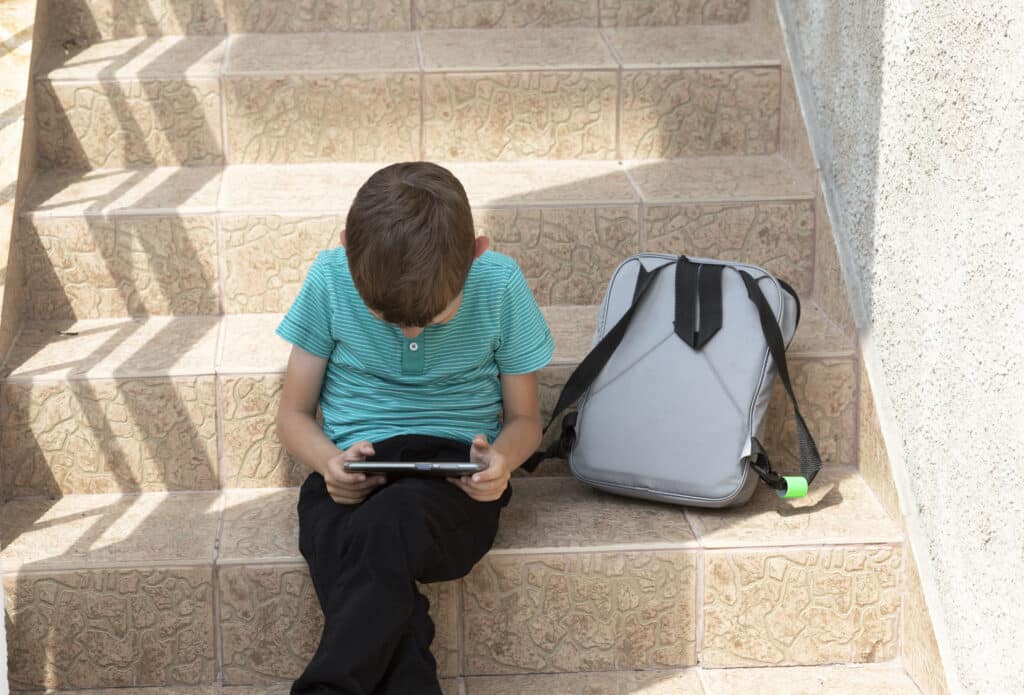Outer space has always sparked a sense of wonder and fascination in the human mind. If you and your child are interested in learning more about astronomy, it’s a great time to do some exploring together from home. Whether you go outside and look up at the stars to identify constellations or explore the planets through a telescope, it’s inspiring to learn more about our universe. This guide will show you some fun ways to teach your kids about astronomy, how to do some stargazing, identify planets, and more.
Astronomy: beginner’s guide
Before you start your astronomy journey, it’s important to learn more about what it is and how you can get started learning astronomy from home and your own backyard.
What is astronomy? The study of astronomy focuses on studying the universe and all of the wondrous things in it. This includes everything from stars and planets to comets, moons, and galaxies beyond. You don’t need to be a scientist to appreciate astronomy and all that it entails. With some fun activities and tools, anyone can enjoy learning more about the galaxy.
Getting started in backyard astronomy: One of the easiest ways is to begin looking up at the night sky from earth. A telescope will help you see stars, moons, and planets more clearly. Some helpful online websites and apps can guide you through your journey as you discover new things. Anyone can get started with backyard astronomy if they’re excited to learn more about the universe, planets, and galaxy.
Astronomy for kids (and adults)
Here are some of the basic principles of astronomy and what you can teach your child as you learn together. This is a great activity that you’ll love.
- Teaching your kids general astronomy concepts: Every good lesson starts with the basics, so teach your kids about the solar system, the sun, and the moon. You can also discuss the constellations and what some of the most famous ones represent. A telescope for kids will make it easy and fun to identify various planets and other objects in the universe.
- What is gravity? Gravity is a powerful force that keeps planets rotating in orbit around the sun. It’s also what keeps us “grounded” and able to walk and live on the earth. This invisible force is what pulls objects toward each other rather than floating around in the air. Show your child footage from the moon landing or other space exploration videos and explain how these areas of the universe have weaker gravity, which is why the astronauts appear to be floating as they walk.
- Our planets: Explore the planets of our solar system as you begin your astronomy lesson. Discuss some of the more “famous” planets like Venus, Saturn, and mars. Each planet has its own unique characteristics, so it’s important to talk about what makes them different from one another, too. Earth is the only planet that can sustain life (that we know of). Talk about our exploration on planets like Mars using new technology like Mars Rover that captures incredible footage of this mysterious planet.
- What are galaxies? Galaxies are systems or clusters of stars, dust, gas, and dark matter bound together by gravity. The word comes from the Greek word galaxies, which means “milky.” This Greek word is also a reference to the famous Milky Way. Galaxies come in many sizes ranging from small dwarf galaxies with 100 million stars to giant galaxies containing over a trillion stars.
- How can you become an astronomer? Astronomers must study for many years before they can enter the profession. Encourage your child to enroll in some astronomy-related space science classes in school or when they attend college. Most astronomers obtain a science degree from an undergraduate college, then go on to obtain their doctoral and post-doctorate degrees in astronomy to secure a career in the field.
- Astronomy fun facts: The study of astronomy is filled with fascinating facts, and here are some fun ones to share with your child: One million planet Earths can fit inside the sun. The mass of the sun takes up 99.86% of the entire solar system. It costs NASA $12,000,000 for just one full space suit for an astronaut. There are more trees on earth (approximately three trillion) than there are stars in the Milky Way (approximately 100-400 billion). Look for more fun facts that you can learn and talk about with your child.
You don’t need a lot of expensive equipment or massive computers to enjoy skygazing. Simply enjoy the experience of looking at stars from home. Here are some tips and tools you’ll need for an incredible skygazing experience.
Skygazing tips
- Look at the moon and learn about the different phases, when they change, and what the phases mean, such as waxing, waning, and gibbous.
- Keep an eye on the sun as it rises above the horizon. Make a note about how the sun’s direction changes daily and how it moves when the seasons change.
- Try to do your stargazing and night sky watching without any extra lights. You can turn all of the lights off in your home before you go outside or plan a camping trip to spend some time at one of the best places to stargaze.
- Play a game to see how many comets you can spot as they travel through the sky. You can also do a “planet challenge” to see how many planets your child can find and identify.
- Make stargazing and skygazing fun by serving snacks, pizza, or hot chocolate.
- Telescope: Every amateur astronomer should have a quality telescope for stargazing. You can find various options at different sizes, capabilities, and price points. Your telescope should be able to capture clear images of the moon, planets, and stars. Some options also attach to your smartphone so you can snap a photograph of your discoveries.
- Best telescope for beginners and kids: Choose a kids telescope that’s lightweight, portable, and easy to set up and use. It should include a sturdy tripod to keep it stable as your child looks through it. The best telescope for kids and beginners should also have a carrying or storage case. Research the different features, including the aperture, lens type, focal length, and magnification capabilities.
- Using your smartphone and apps: There are many wonderful apps available to make skygazing easy. Download a few different apps that you can use to identify things like planets and constellations. These apps use your smartphone’s camera as you point it up at the sky. It provides a quick reading of the various items in the galaxy above for easy learning.
- App recommendations: SkyView is an app that helps you identify everything from constellations to satellites with your smartphone’s camera. The Star Chart app offers an augmented reality format that makes studying the stars easy and fun for kids and adults. Another excellent app is Solar Walk which features a 3D model of the solar system to engage with the stars and planets in a new way while learning a variety of interesting facts about astronomy and much more along the way.
- Binoculars and more: If you’re traveling or can’t bring your telescope with you, a good pair of quality binoculars can help you look up at the night sky and see things more clearly with a wider field of view. A red flashlight will improve your night vision as you look up at the sky. You can also visit your local library or shop online to find a wide range of helpful astronomy guidebooks. Don’t forget to include a journal so your child can keep track of the things they discover, too.
Picking a good spot/site
Finding the right spot is the key to an amazing astronomy experience. Ultimately, you want to find a location with the least amount of light. Too much light can make it difficult to see things in the universe clearly. There are several ways you can discover a good site, including the Bortle scale.
The Bortle scale: Use the Bortle scale to help you measure the night sky’s brightness in any location. This scale has nine levels, with level 9 having the most amount of light pollution. The lower the number, the darker the spot will be for excellent stargazing. The Bortle scale uses astronomical observations that measure the amount of light pollution in virtually any location. If you don’t want to use the scale, you can also purchase a sky quality meter that measures brightness levels wherever you are.
Things to look out for
As you practice the study of stars and planets, here are some key things to look out for as you go.
- Sun, moon, and stars: Start by looking for the moon at night with the naked eye or through your telescope. Never look directly at the sun, but you can observe where it is and when it rises and sets. You can also look for different stars and constellations as you learn to identify them by name.
- Patterns, the Milky Way, and Orion’s Belt: Keep an eye out for star patterns, and soon you’ll discover various constellations. Orion’s Belt appears as three stars and is one of the most famous observations used by budding astronomers to expand their discoveries. You can also see the Milky Way with the naked eye in extremely dark places or with your telescope.
- Getting oriented/where things rise and set: Learn where the north, east, south, and west are from your specific vantage point to make observing easier. Just like the sun, the planets rise in the east and set in the west – the moon does, too. As the seasons change, you can also learn which bright stars and constellations are visible during different times of the year. Remember that planets shine brighter than most stars which makes them easier to spot at first.
- Learning about positions in the night sky: Sky positions are measured in degrees.
- The number 0 represents the horizon, while 90 degrees is directly overhead. You can stretch your arms out to your sides to cover about 10 degrees of sky. An easy example to remember is if the planet Venus is reported to be 15 degrees from the moon, you will know that it should be about 1 ½ outstretched fists.
Keeping an astronomy journal
Part of the joy of astronomy is keeping a log of the things you discover. An astronomy journal is a wonderful way for you and your child to record your observations. Whether you’re looking up at the stars and planets from home or at a state or national park, a journal will help you track the things you find as you go. You can make your journal any way you like, but it’s important to notate exactly what you find and the date. Include things like the time of night, the season, and where you are when you find new discoveries. Make your astronomy journal even more unique by drawing fun pictures of the moon, sun, stars, and planets to give it a personal touch. The journal will not only be something your child can use as a learning tool, but it’ll also be something they treasure for years to come.
With the right conditions and some patience, you can enjoy the study of astronomy from home. As you discover new things in outer space, make sure you keep track of them in your journal. Invest in a good telescope for kids or beginners, and make sure you have everything you need to ensure a positive, meaningful experience. Astronomy isn’t just for scientists – it’s also a fantastic opportunity to spend time with your child and teach them about our fascinating universe.










